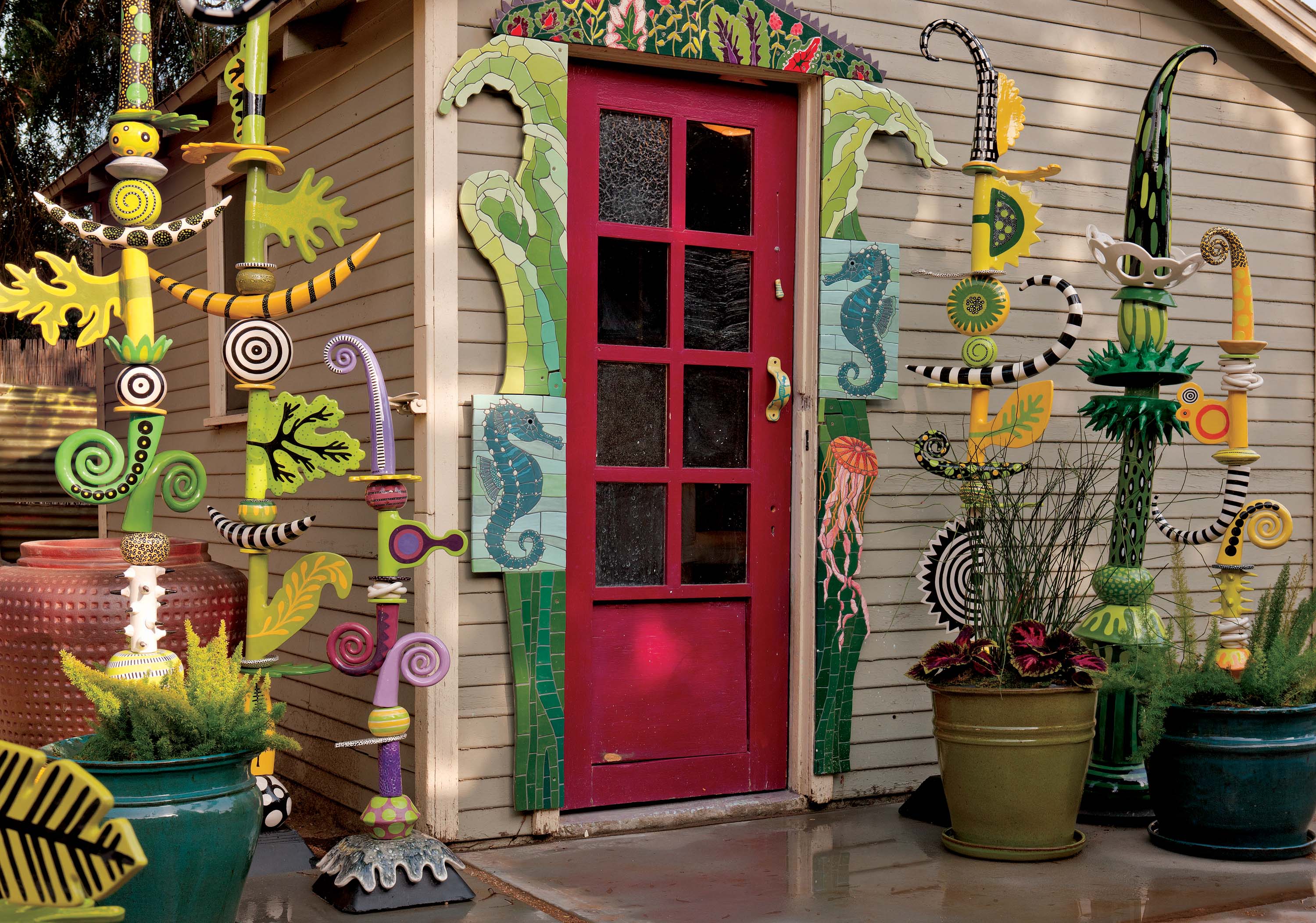
19 Oct In the Studio: Leslie Codina
Sculptor Leslie Codina’s work commute is a walk through the garden where she merges career with family in a seamless whole. Best known for reviving the stacked totem movement with her whimsical interpretations of natural forms including fronds and thorns, her studio goes beyond influencing her art. Her address is where artistic concepts are conceived, born and incubated. With artistic expression in full bloom, her studio is intrinsically partner to her business.
It was nearly midnight back at the turn of the millennium when would-be homeowner Leslie Codina squinted to find the address her real estate agent recommended: a new listing in an affordable older neighborhood of Ontario, California. Without a sign in front of the bungalow, it was difficult to find. The single woman and fledgling artist inched slowly along the street, laid out on a grid back when horses were still kept for transportation, corralled by the alleyway. The night’s journey was made all the darker by traversing through a tunnel of towering camphor trees.
Codina, a bonsai aficionado, hit the brakes in front of the stateliest tree on the block — its silhouette beautifully branched out, her heart bounded at the majesty of the perfectly trimmed specimen. In a stroke of karma, it stood sentry at her destination. The artist, whose work is inspired by the natural world, laughs, “The house was secondary to the tree. Fortunately, it came with buildings.”
Her talent flourished on the 10,000-square-foot lot she fashioned into her vision of Eden. The mastodonic tree blessed the self-described “rain deprived” Washington state native with cooling shade, reconnecting her spirit to the childhood she remembers with a smile as “facing up to the clouds. It would be overcast and drizzling.” Foundational to her artistic mission is her aesthetic connecting joy to “interacting with the forest, moss, rivers and rain.”
The mini-compound Codina had to shape to enhance her life’s work included the clapboard covered bungalow, mother to a trio of outbuildings connected by a courtyard. Her first task: to dedicate each with specific
functions her rigorous 10-step process requires. While the total floor space is Lilliputian compared to her volume of custom work, the ever-cheerful Codina replies it is motivating: “The process is very streamlined. Things are constantly circulating because we are always conscious of needing to finish.”
A straight shot up the narrow driveway, a large mural fills the back wall of the repurposed single-car garage. Painted in the bold colors and innocent stylized shapes iconic to Codina originals, the oversized graphic statement visually guides visitors back to her clay construct and cleaning studio. Here, clay is rolled, cut and shaped according to a plan. Her designs may be logged in one of her many sketch pads, or lightly sketched out on the surface of the hefty table that fills the bulk of the space. When a creative vision bursts open, it must be sketched before it fades in the daily bustle.
Across the open courtyard, a 10-by 12-foot former tool shed found renewed purpose as Codina’s painting studio. She expresses gratitude that her husband, Steve Browne, a carpenter by trade, works “in ways I would have never thought of” in the relentless struggle to keep her ever-expanding galaxy of paints efficiently and attractively organized within the space-challenged theater of operation. When a new product inspires her — as a richly hued proprietary Italian paint line did recently — Codina is confident her husband will construct a fine niche for her new treasure.
Mercifully in the notably hot inland summers, the third building where the kiln fires up is located at the rear corner of the level lot. Once cooled, finished work is checked for quality before being boxed up in the newer storage tent erected to stage the growing demand for Codina originals.
Perfecting her craft requires many of Codina’s days to stretch from 8 a.m. until nearly midnight. To achieve balance, in decorating her home she purposely chose neutral colors to set off the natural materials that include granite, wood and leather. Color obsessed, the walls are awash with hues of soft sages and blues. Codina explains, “As I work with saturated colors, my home is my reprieve … a chance to relax and refresh my color palette.” Sometimes, at her deepest moments of sleep, a new idea awakens her. If pen and paper aren’t on the nightstand, she’ll whisper the idea to her husband, his quick mind as reliable as a tape recorder.
Prior to having a garden the artist admits, “I didn’t think gardens needed art. But when I installed my totems in the garden, I discovered they drew me outside.” She revels in the instantly gratifying pleasure revealed by “not having to wait” for a plant to grow tall in the garden. As focal points, she lauds her ceramics’ colors holding true. As growing plants crowd in around her sculpture, often described as visual exclamation points, the importance of being able to rearrange the individual elements of a totem exerted itself.
During daylight hours, the garden between thresholds is a continuous godsend. Codina says, “When I’m frazzled, I go outside and sit down.” There she might enjoy her favorite relaxants, “chocolate and the garden,” together. Such times bring out the best of working in the Southern California sunshine. Not just that production is most efficient in the arid region, mild winter weather allows her to enjoy her sculpture in the setting most favored by her clients: the garden.
The artist, now mother of 3-year-old Corbin, loves watching him gravitate naturally to art. The organic flow between home and studio within a garden allows the family to enjoy mealtime together.
The benefits of such connectedness are tangible. Observing her son interact with her sculpture inspired Codina to reconfigure some of her tabletop totems as a way to encourage families with toddlers to better enjoy ceramics from a new perspective of being hung from the ceiling.
Motherhood has expanded her appreciation of mementos of her home’s history, small and large. She giggles at the evidence of a naughty child who scrawled on a door the warning: “Beware of attack dogs. This means you Harold.” Her protective gene goes on high alert when the buzz of chainsaws of the city tree trimmers near. “I still stand outside all day until they get to my tree. Then I direct them on which branches to cut and which ones not to.”
Fifteen years into the life of a working artist, Codina is confident about the future. She says simply of her lifestyle, “When you love your work the way I do, long days don’t make you a workaholic.”
- Sculptor Leslie Codina is the serene center of gravity around which a galaxy of clay clusters revolves in tightly monitored stages of development. Pliant clay is handled much like giant pasta in the repurposed garage where it is hand rolled, tooled, shaped and air dried.
- A deciduous Chinese elm drapes over the turn of the 20th century craftsman studio, sprouting a cooling leaf canopy in summer. set amidst airy magenta clusters of “verbena bonariensis” bobbing in the breeze, Codina totems add needed visual anchoring for the cottage garden.
- Codina credits her husband, carpenter Steve Browne, with brilliant space planning. The custom cabinetry with efficient arrangement specific to her plethora of parts and supplies promotes efficiency.
- Codina’s delicate hands exactingly trace the beginnings of her trademark cheerful sculpture into clay slab.
- A drawing of a current project is posted past shelves lined with proprietary formulas of custom paint mixes.
- The beautiful bones of a stylized Codina sculpture rises up through an informal flower bed of Black-eyed Susans mixed with Shasta daisies, adding an element of bold texture to draw visitors into the garden.
- Greenware is grouped to be clad in three coats of paint prior to ornamention with decorative detailing.
- In front of the orange wheel of the clay roller, table totems, petite versions of her iconic garden sculpture, dominate the raw parts assortment.





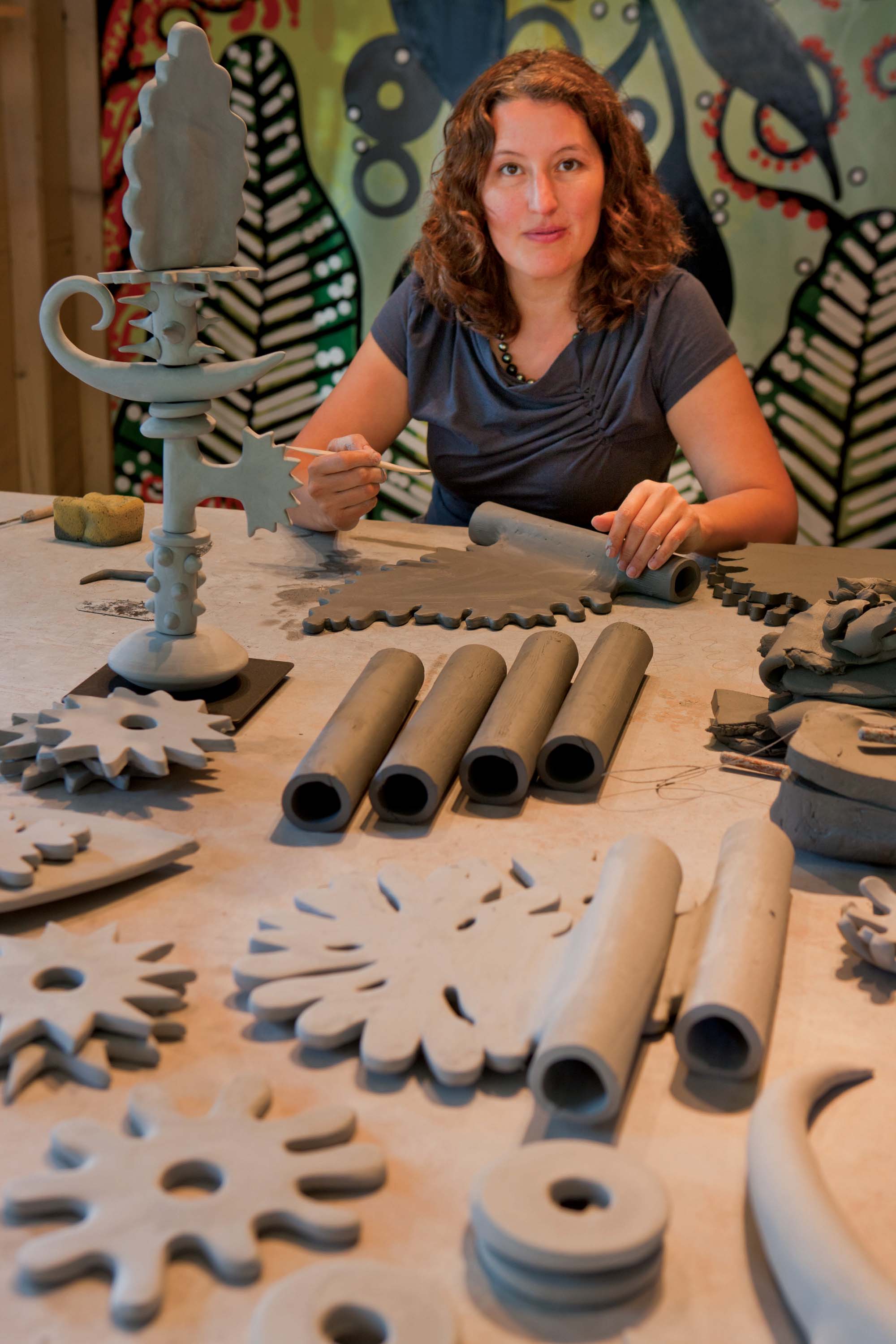
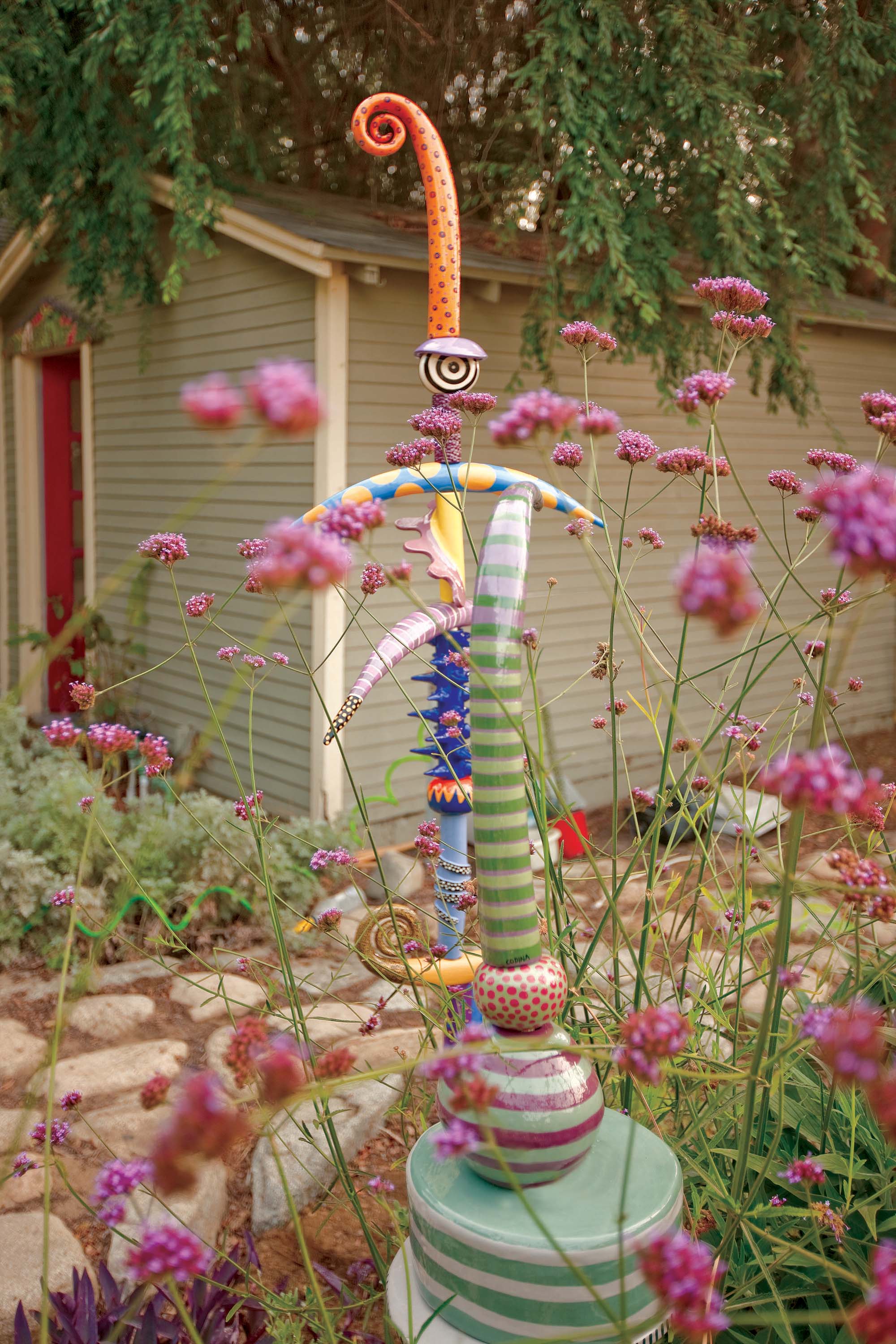
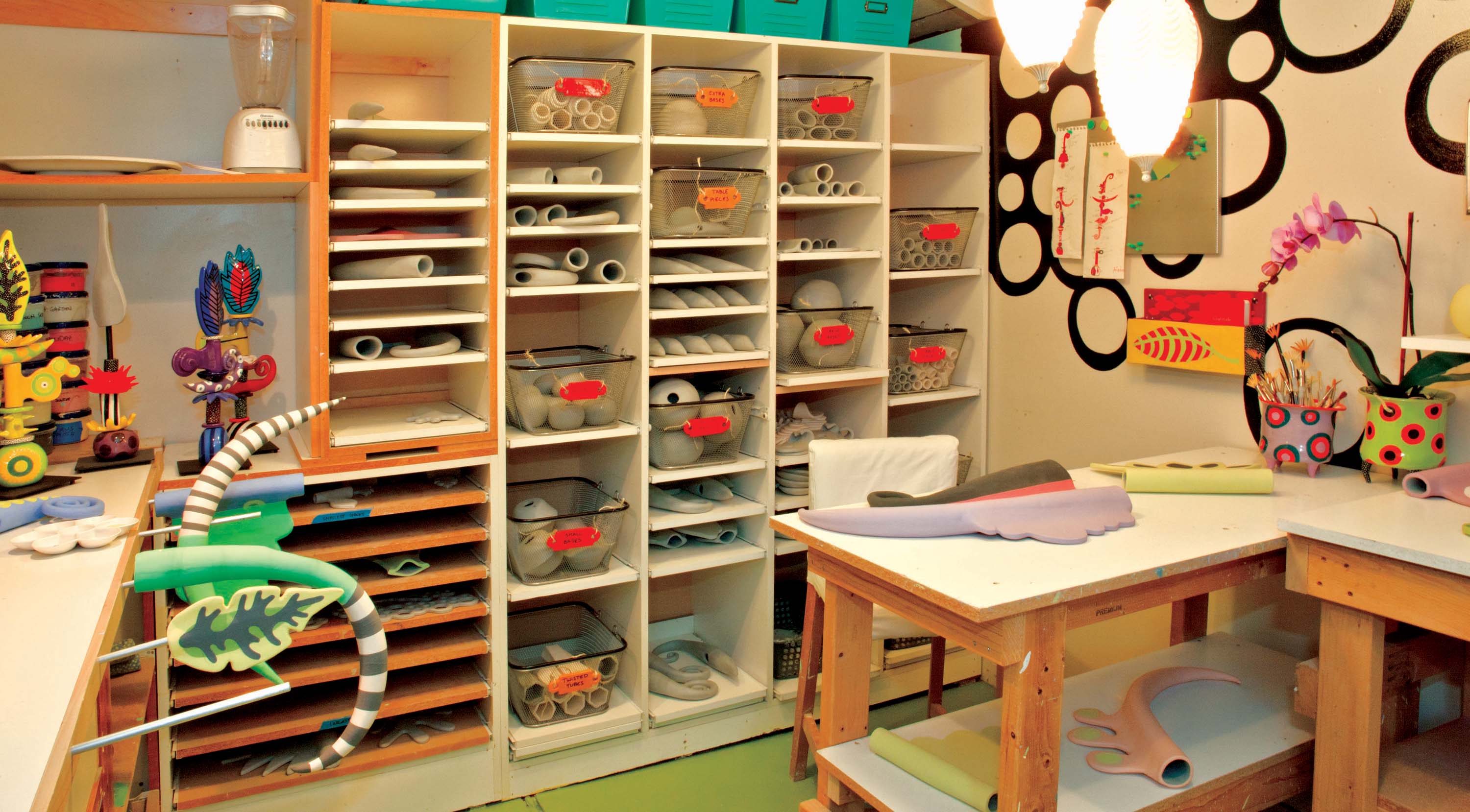


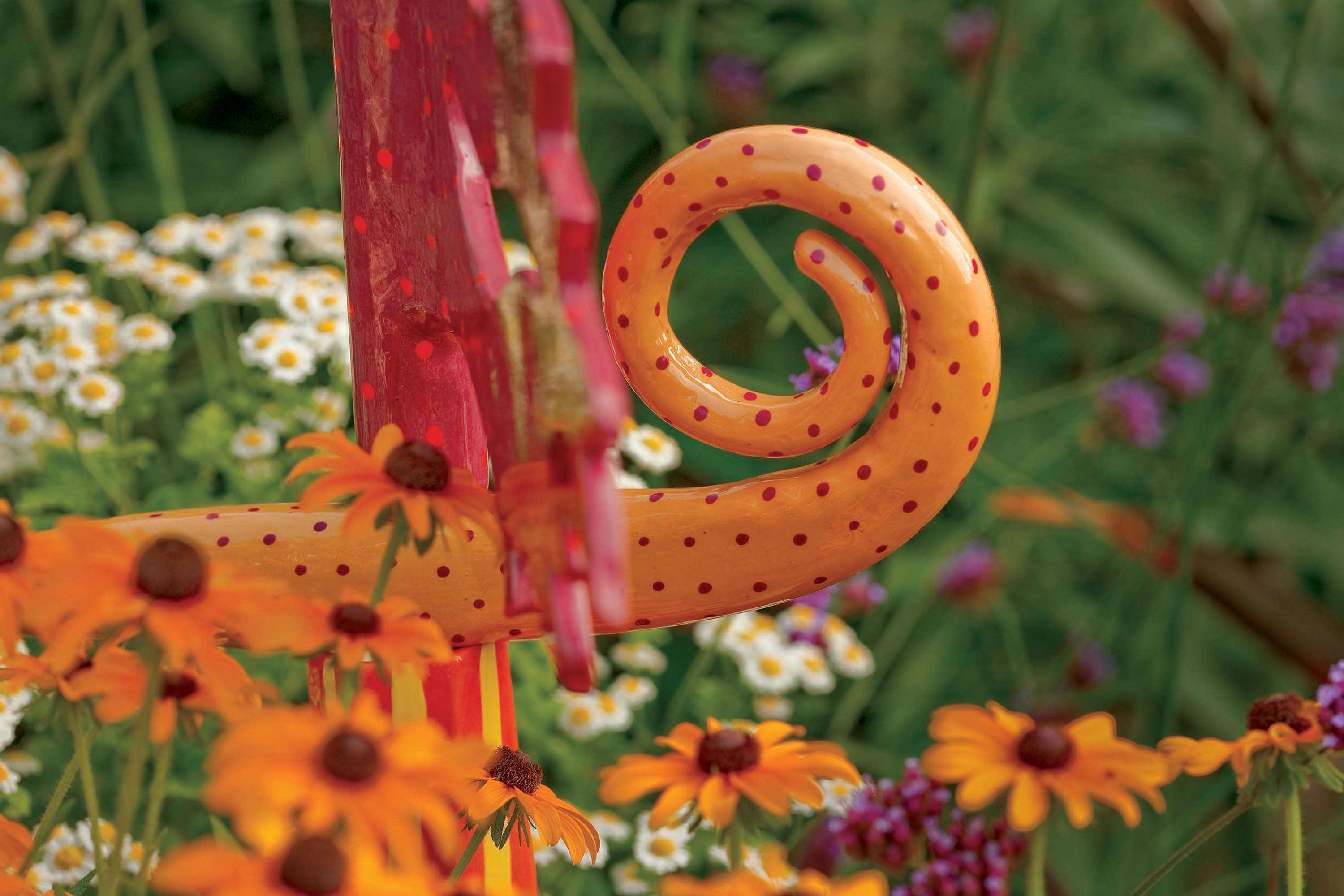
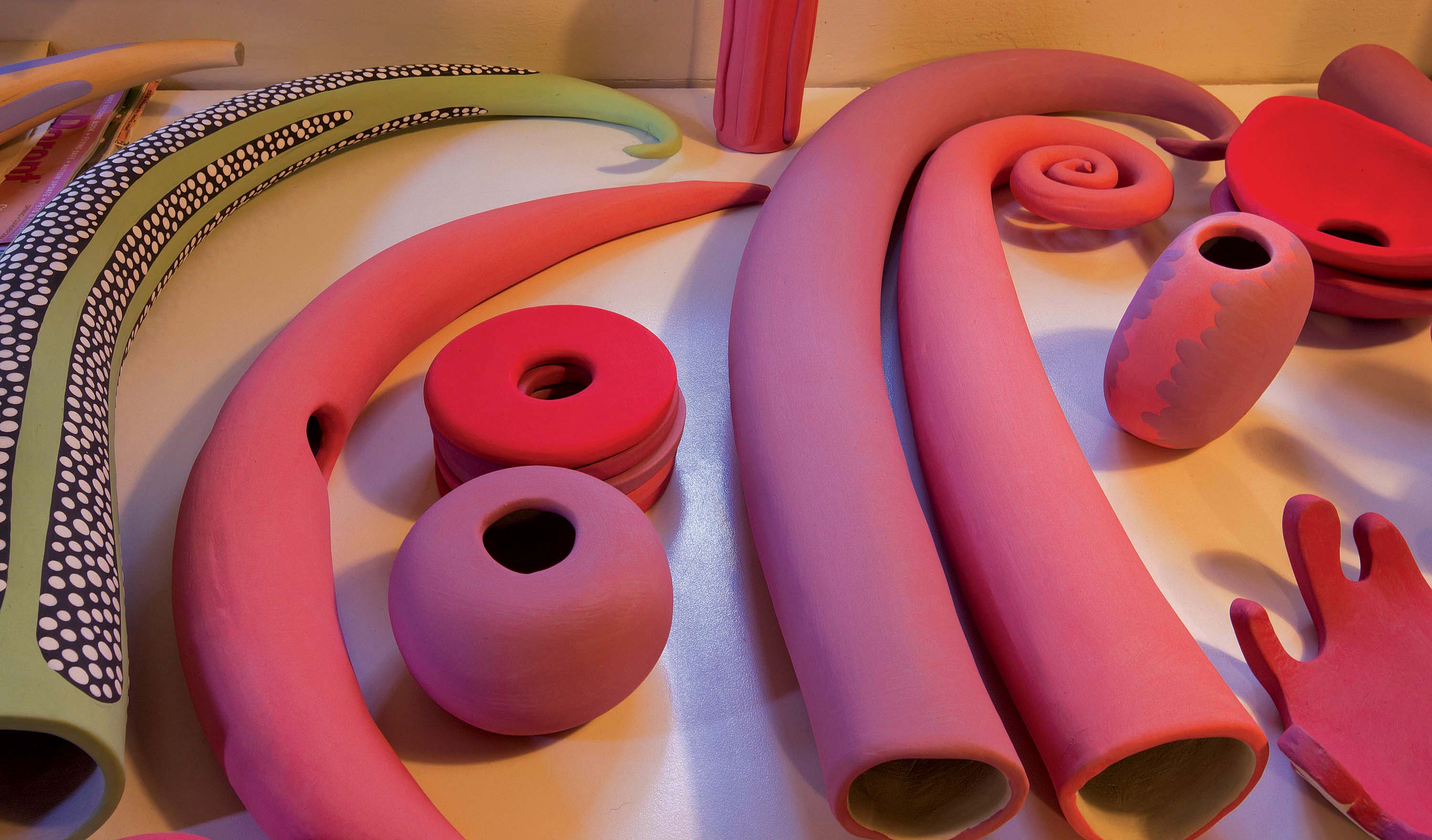
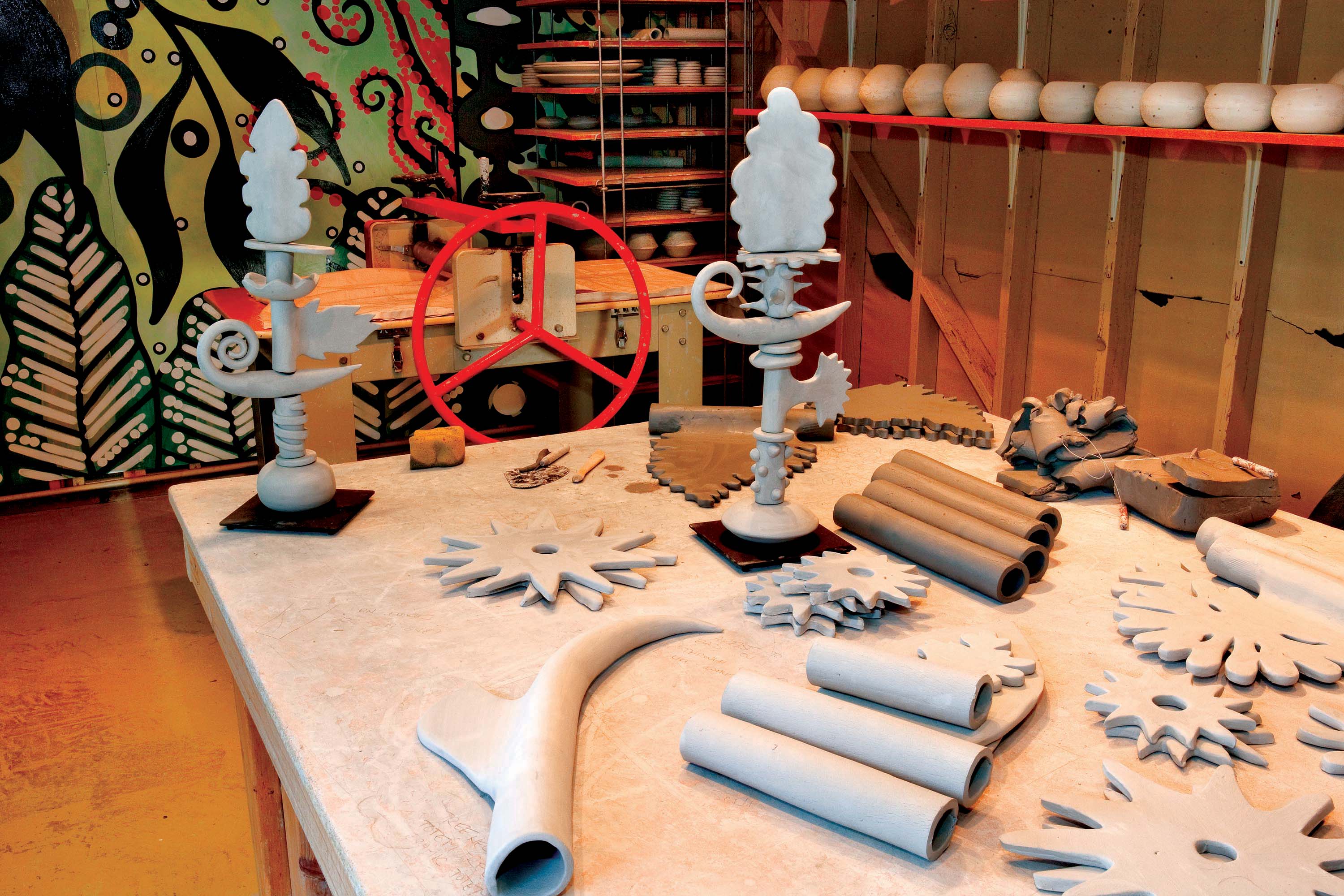
No Comments